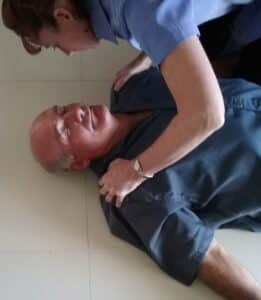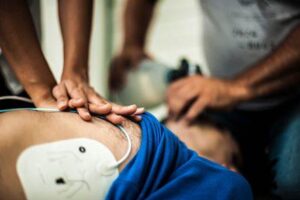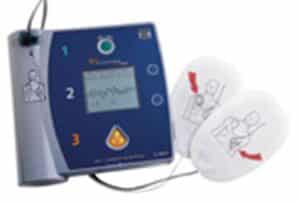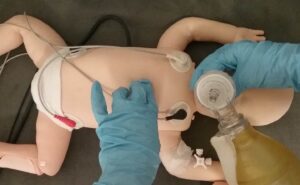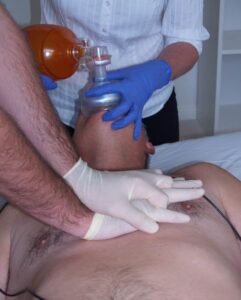Objectives
Definitions
‘Basic Life Support (BLS) is the preservation or restoration of life by the establishment of and/or maintenance of airway, breathing and circulation, and related emergency care. The use of Automated External Defibrillators (AEDs) by BLS providers is encouraged.’ ANZCOR Guideline 11.1, 2021
‘Advanced Life Support (ALS) is basic life support with the addition of invasive techniques, such as manual defibrillation, advanced airway management, intravenous/intraosseous access and drug therapy (e.g.: adrenaline, amiodarone and fluid replacement).’ ANZCOR Guideline 11.1, 2021
The DRSABCD acronym provides an easy to remember mnemonic to provide effective BLS.

DRSABCD
D = Dangers – check for hazards, risks, ensure safety
R = Responsive – check for response
S = Send for help
A = Airway – clear & open the airway
B = Breathing – check for normal breathing
C = CPR – start CPR commencing with chest compressions give 30 compressions followed by 2 breaths
D = Defibrillation – use Automated External Defibrillator (AED) if available
ARC BLS Flow Chart DRSABCD Table BLS Quick Reference BLS Flow Chart
The ILCOR CoSTR statement on the sequence for manoeuvres in BLS, found there to be equipoise between the CAB sequence (compression for circulation, airway and breathing) and the ABC sequence (airway, breathing and compression for circulation). The ABC sequence has become an established and well recognised method for the delivery of CPR throughout Australia and Europe. Open airway, check for breathing, then start compressions. Monsieurs et al, 2015, p35
